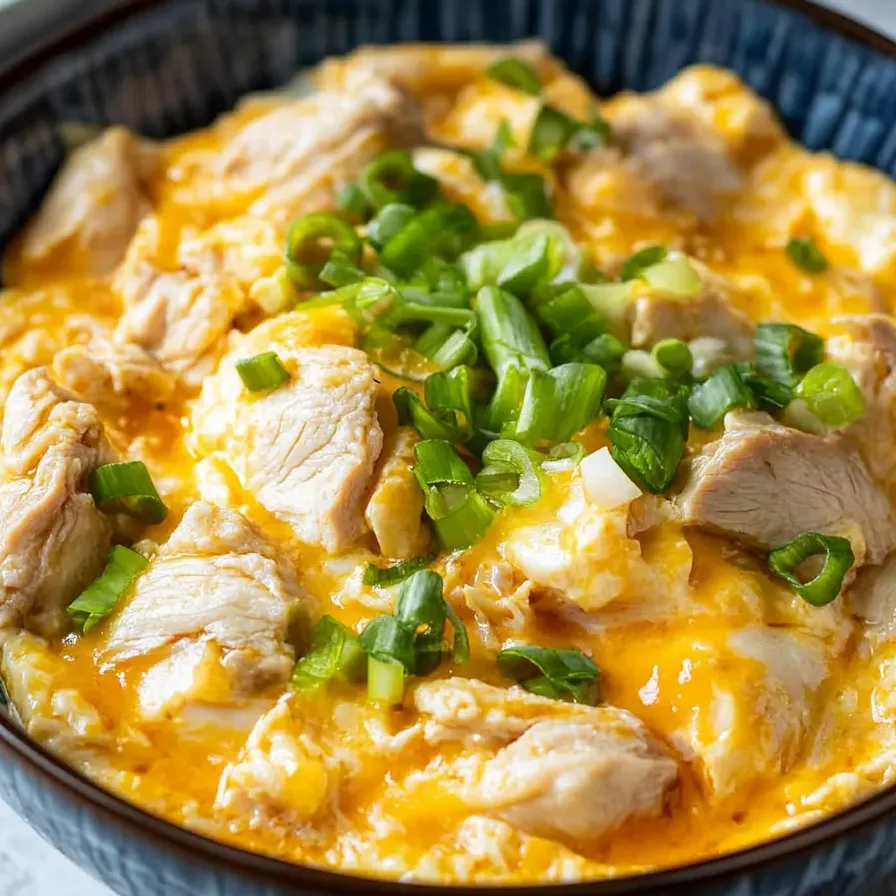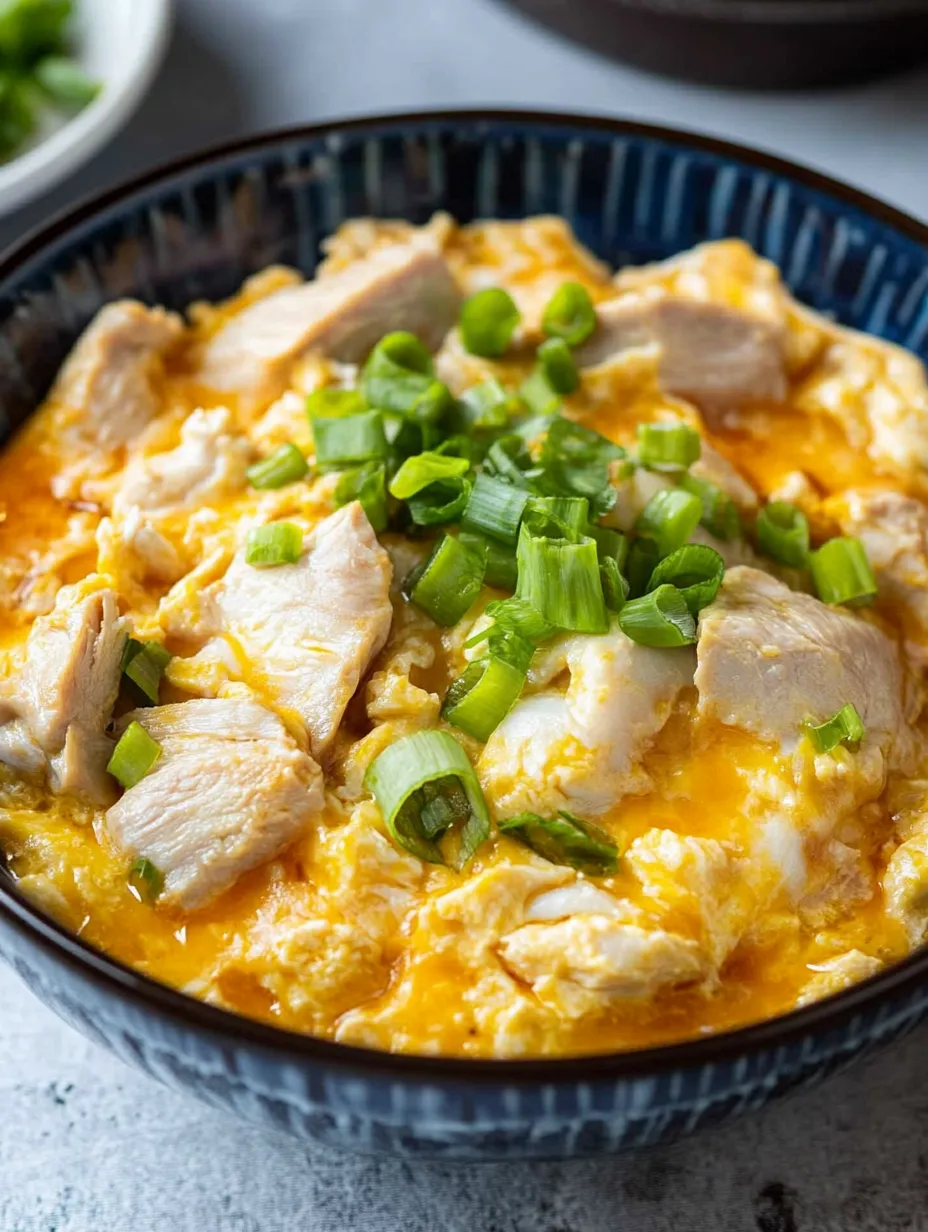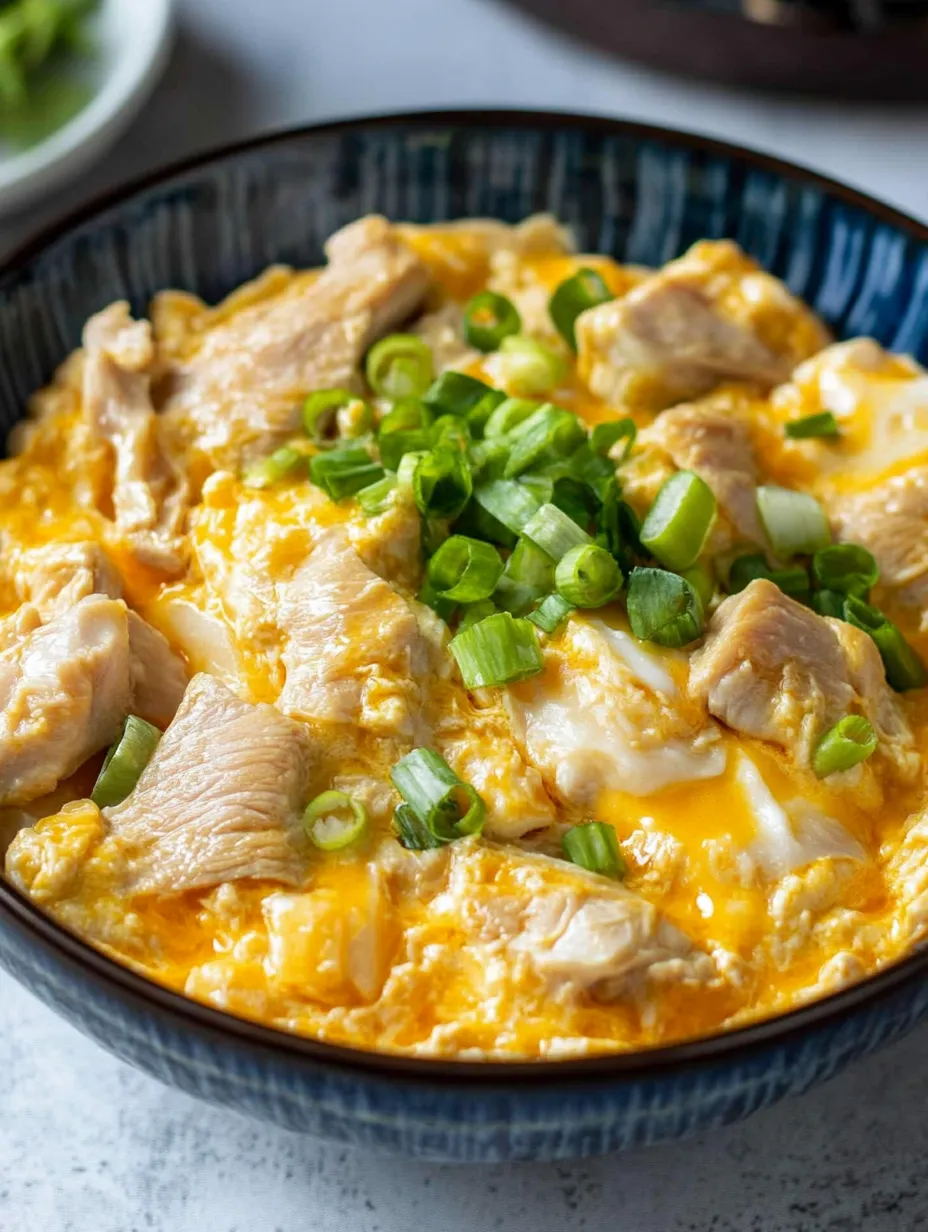 Save
Save
This 15-minute Japanese chicken and egg bowl transforms ordinary ingredients into a restaurant-worthy meal that has become my weeknight salvation when I need something comforting yet impressive with minimal effort.
This recipe saved me countless times when unexpected guests arrived. The first time I made it, my Japanese friend complimented its authenticity, and it's been my confidence-boosting dish ever since.
Ingredients
- Boneless chicken thighs: the fat content keeps the meat juicy and adds richness
- Large eggs: lightly beaten creating beautiful golden streaks throughout the dish
- Chicken or dashi stock: provides the foundation of umami flavor
- Thinly sliced onion: adds sweetness as it softens during cooking
- Mirin: sweet rice wine essential for authentic Japanese flavor
- Regular soy sauce: contributes saltiness and color look for naturally brewed varieties
- Sake: helps tenderize the chicken and adds complexity
- Granulated sugar: balances the savory elements perfectly
- Green onion: brings freshness and color to the finished dish
- Cooked rice: use short-grain Japanese rice for authentic texture
Step-by-Step Instructions
- Prepare the chicken:
- Cut boneless chicken thighs into even 1-inch cubes for quick cooking. Place in a bowl and mix thoroughly with sake, allowing it to marinate while you prepare other ingredients. The sake not only flavors but also tenderizes the meat.
- Prepare the eggs:
- Crack eggs into a separate bowl and beat them lightly, stopping when they're about 65% mixed. This partial mixing creates beautiful golden streaks in the final dish rather than a uniform yellow. The contrast between the whites and yolks adds visual appeal.
- Create the cooking base:
- In a small frying pan about 7 inches wide combine chicken stock or dashi stock, soy sauce, mirin, and sugar. Stir gently until the sugar completely dissolves. This creates a balanced sweet-savory liquid that will become the flavor foundation.
- Cook the proteins:
- Add sliced onions to the pan and spread them evenly across the surface. Place the marinated chicken pieces in a single layer and cook for 2 minutes. Flip each piece carefully then pour the beaten eggs over everything in a circular motion. Let cook for 2 minutes until eggs are mostly set but still slightly runny on top.
- Assemble the bowl:
- Scoop freshly cooked rice into a large bowl about 7 inches in diameter. Flatten the surface gently with the back of your spoon. Carefully slide the entire chicken and egg mixture from the pan directly onto the rice, preserving the delicate egg texture. Garnish immediately with finely chopped green onions.

My favorite part of this recipe is how the slightly runny eggs create a silky sauce that seeps into the rice below. When my daughter first tried it, she declared it better than her favorite restaurant version a true kitchen victory moment.
Storage and Reheating
This Japanese bowl keeps remarkably well in the refrigerator. Store leftovers in an airtight container for up to 4 days. The flavors actually intensify overnight as the sauce continues to penetrate the ingredients. When reheating, microwave for 2-3 minutes with a damp paper towel over the bowl to prevent drying, or gently warm in a covered pan over medium-low heat until just heated through.
Ingredient Substitutions
While traditional recipes call for specific Japanese ingredients, this version offers flexibility. If sake is unavailable, dry sherry or even white wine provides similar tenderizing properties. For a non-alcoholic option, use extra stock with a splash of rice vinegar. Chicken breasts can replace thighs for a leaner option, though cooking time should be reduced to prevent dryness. Vegetarians can substitute firm tofu for chicken, pressing it well and pan-frying briefly before adding to the sauce.
Cultural Context
Oyakodon is a classic example of Japanese donburi comfort food where a savory topping is served over a bowl of rice. The name poetically translates to parent and child bowl referring to the chicken and egg combination. This dish emerged during the Meiji era around the late 19th century and became popular as a quick, nutritious meal for workers. The balanced flavors represent the Japanese cooking philosophy where sweet, salty, umami, and sour elements create harmony in a single dish.

Frequently Asked Cooking Questions
- → Can I substitute the chicken thighs with something else?
Yes, you can substitute chicken thighs with chicken breast, though the result may be slightly less tender. For vegetarian options, try using firm tofu, mushrooms, or plant-based chicken alternatives. Just adjust cooking times accordingly.
- → What if I don't have sake or mirin?
If sake isn't available, dry sherry or rice vinegar with a pinch of sugar makes a good substitute. For mirin, you can use 1 tablespoon of sweet rice wine or 1 tablespoon of rice vinegar plus ½ teaspoon of sugar.
- → What is dashi stock and what can I use instead?
Dashi is a Japanese stock made from kombu (seaweed) and bonito flakes. You can substitute with chicken stock as mentioned in the ingredients, or use instant dashi powder dissolved in water. In a pinch, very light vegetable broth with a dash of fish sauce works too.
- → Why are the eggs only beaten to 65% mixed?
This technique creates beautiful streaks of white and yellow in the final dish, adding visual appeal and textural variation. Fully mixing the eggs would result in a more uniform appearance and texture, which is also acceptable if preferred.
- → Can I prepare any components of this dish ahead of time?
Yes! You can slice the chicken and marinate it up to 24 hours ahead, chop the onions, and cook the rice in advance. Store each component separately in the refrigerator, then quickly assemble and cook when ready to serve.
- → Is this dish known by another name in Japan?
Yes, this dish is very similar to Oyakodon, which translates to 'parent-and-child bowl' - referring to the chicken and egg combination. The traditional preparation involves simmering the ingredients and serving them over rice.
